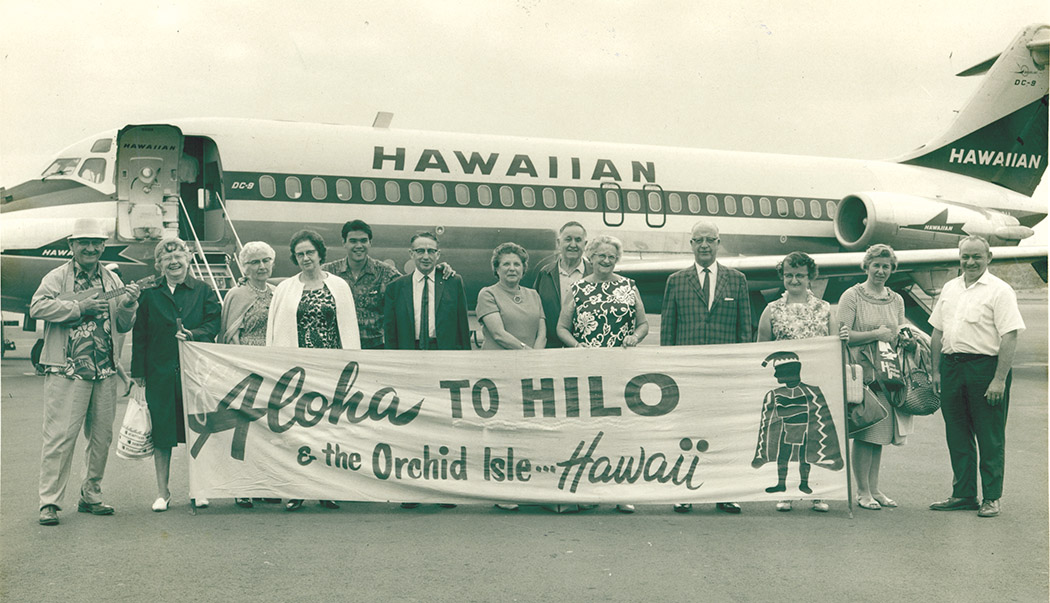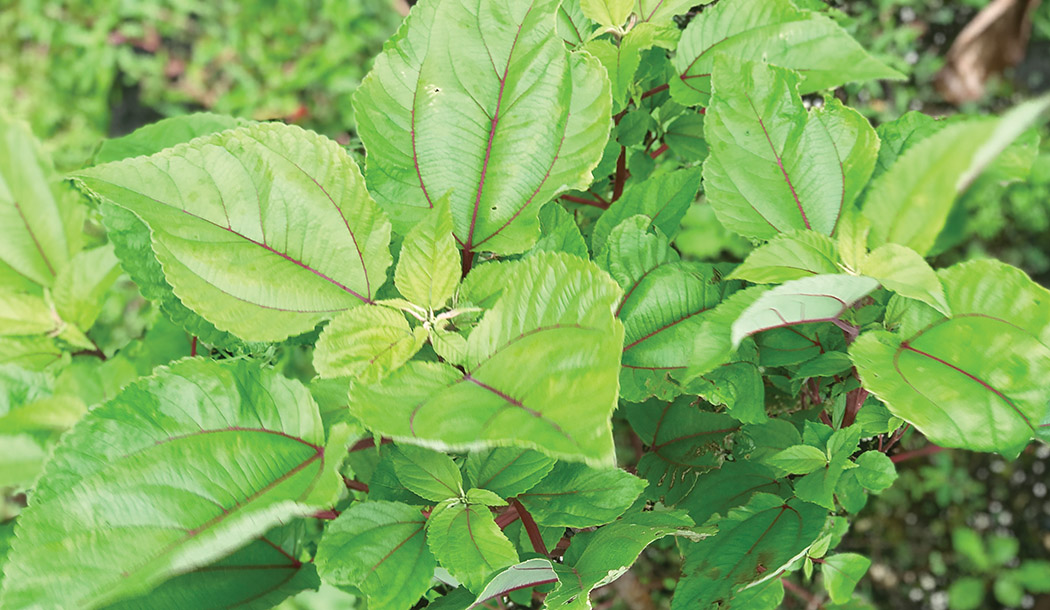
La‘au Lapa‘au: Medicinal Plants and their Healing Properties

By Marcia Timboy
Hawai‘i is viewed throughout the world as a place of rest and rejuvenation, a concept that is deeply rooted in and supported by the healing environment of our islands. Ancestral wellness wisdom is the basis of the natural health movement here, which has gained mainstream status as more people adopt principles and practices of indigenous healing arts.
Traditional Hawaiian healing arts such as ‘ai pono (healthy eating), ho‘oponopono (emotional/spiritual balance), lomilomi (massage therapy), and la‘au lapa‘au (medicinal plant treatment) are recognized as a viable alternative to conventional medical measures.
La‘au Lapa‘au: Traditional Preparation and Application
Traditional la‘au lapa‘au requires a holistic approach of body, mind, and spirit for optimal healing results. According to renowned traditional healer “Papa” Henry Auwae, “La‘au lapa‘au is solving the problems of body, mind and spirit. In Hawaiian healing the mental is not separate from the spiritual and physical. Rely on spiritual insight and most of all, guidance from akua [God].”
The plants listed below, along with their traditional preparation and application, have been utilized in la‘au lapa‘au for generations:
‘Awa (Piper methysticum)
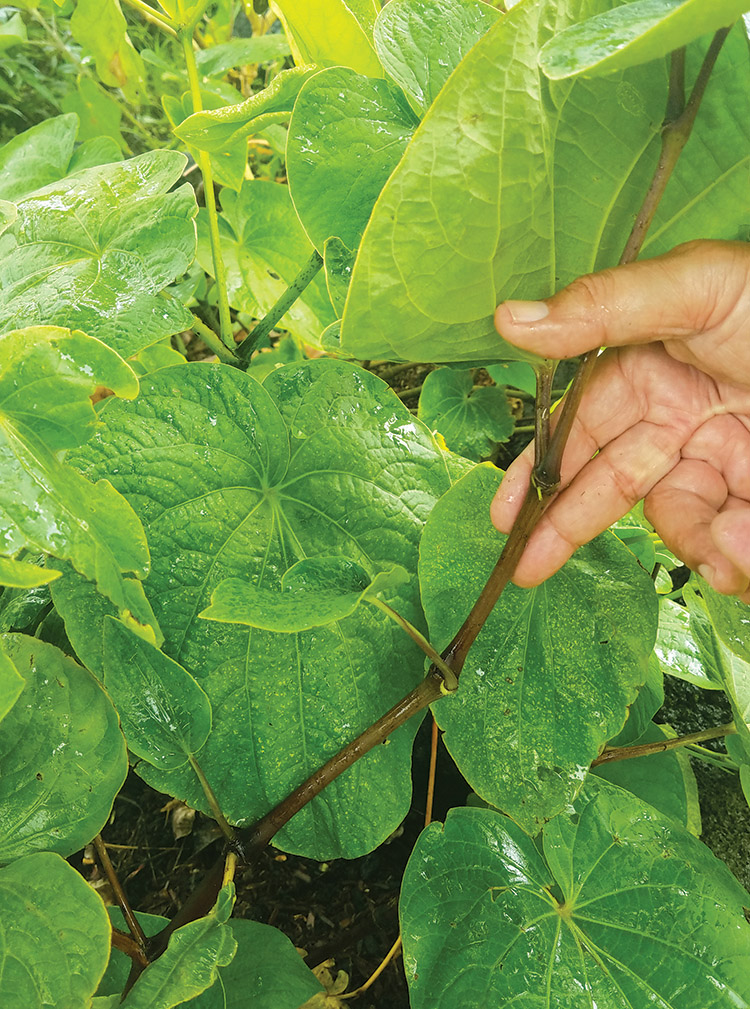
The low-lying ‘awa is found in or just below the borders of the lower forest zone in moist and shady areas on all the main Hawaiian islands.
‘Awa extract, also known as kava, is often mixed with various other substances for healing purposes. Prepared ‘awa is used to treat insomnia, kidney disorders, chills, latent childhood disease, headaches, and tiredness. The ashes from burned ‘awa leaves are rubbed on lesions caused by thrush for children. The beverage made from the root extract is used to relieve congestion in the respiratory tract, cure difficulty in urinating, and regulate menstrual cycles.
‘Awapuhi Kuahiwi—Ginger (Zingiber zerumbet)
The ginger plant is commonly found in mesic (humid), shaded forests on the main Hawaiian Islands.
Said to have anti-inflammatory properties, ‘awapuhi kuahiwi–also known as shampoo ginger—is used as a compress for sores, cuts and bruises; it is also used to treat toothache, achy joints, sprains, stomachache, headaches, ringworm, and other skin diseases. The rhizomes are pounded together with pa‘akai (Hawaiian sea salt), placed on a young frond, squeezed, and the liquid ingested. The pulverized residue can be applied as a compress to treat headaches.
Hala (Pandanus tectorius)
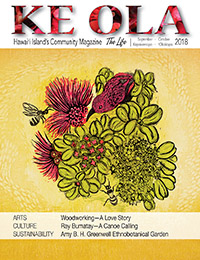
The pandanus tree grows in coastal areas. Hua (keys) or fruit are used for lei, and when dried, as brushes to apply dyes. The lauhala (leaves) are woven into mats, sails, containers, hats, and are also used as thatching material. Uleule hala is woven into cordage. Hala hinano (flower) is used to scent kapa cloth and placed between mats for sleeping. Lei hala are given to signify new beginnings as well as moments of completion such as funerals, birthdays, and graduations.
Hala blossoms can be a mild laxative. The fruit is part of a treatment for thrush and latent childhood diseases. The root is a good source of vitamins B and C. Medications for skin disorders use the aerial root in combination with other plant materials including niu (coconut); kukui (Aleurites moluccana) flowers; noni (Morinda citrifolia); ko (sugarcane); and hala leaf buds. The hala leaf buds and aerial roots are combined with other plant materials and ‘alae (red dirt) clay for aid in childbirth. A concoction of the aerial root is drunk for chest pains.
Kī (Cordyline fruticosa)
Kī or ti, has a variety of purposes. The leaves are used for thatching, clothing, lei making, and in food preparation. Kī plays an important part of religious ceremonies, and is considered a sacred plant.
In psychological and spiritual healing, kī has a significant role as the leaves are believed to have potent protective metaphysical properties. The kī flowers and leaf buds are mixed with other la‘au to treat shortness of breath and asthma.
Kō—Sugarcane (Saccharum officinarum)
The juice of certain varieties of kō is used as a love potion, while other varieties act to block that love spell. The leaf blades are utilized for house thatching.
The sweet stalk was chewed to strengthen and clean teeth and gums. Kō juice was mixed with medicine to make it more palatable. Young leaf buds mixed with kowali pehu (Ipomoea alba), the tropical white morning glory, and salt are used for treating deep cuts, wounds and compound fractures.
Kukui—Candlenut, Indian Walnut, or Varnish Tree (Aleurites molucana)
Found naturally on the main Hawaiian islands in mesic forests from sea level to elevations of 2000 feet, kukui nuts are used for a variety of purposes. They can be strung on a palm rib and burned as a candle. The nuts, leaves, and flowers are used in lei making. The nut oil is utilized as a varnish. ‘Inamona is a relish made from the roasted nuts. The resin and sap can be used as adhesive.
Kukui flowers, nuts, bark and leaves are used as a laxative or in higher doses, as a cathartic or purge. The fresh leaves are useful as poultices. Pounded roasted nuts are the base for a curative salve to treat sores and external ulcers. For recovery after illness, nutmeats are ground with cooked kalo (taro, Latin name Cococasia esculenta) and kikawaioa (fern, Latin name Christella cyathenoides), and eaten with fish and ‘uala (sweet potato).
Māmaki (Pipterus albidus)
Found on all the Hawaiian islands except Kaho‘olawe and Ni‘ihau, in coastal mesic, mixed mesic, and wet forests. Māmaki bark is useful in making a coarse type of kapa (cloth). The long bark fibers are used for rope and cordage.
Māmaki fruit is used to treat thrush and latent childhood disease. The fresh leaves are used to make an herbal tea to treat general debility.

Noni—Indian Mulberry, Great Morinda, Cheese Fruit (Morinda citrifolia)
This small tree is cultivated and naturalized in dry to mesic sites, disturbed hala forests, alien grasslands, and sandy beaches.
Mashed, ripe fruit with the seeds removed is used as a poultice to apply to boils, or added to various formulations to treat constipation. The wilted leaves can be applied to cysts or growths on the skin. Made into a salve, the mashed fruit is useful in getting rid of uku (head lice). Noni is also used in treating kidney stones, high blood pressure, diabetes, and bowel problems. The stem bark is used for cuts. Root sap can be applied to boils and other skin infections. Concussions are treated with the mashed green fruit, and when mixed with salt it can be used as a topical medication. The fresh or dried leaves are brewed into a tea and used as a tonic for a variety of illnesses.
‘Ōlena—Tumeric, Indian Saffron (Curcuma longa)
This low-lying plant is found on all the main Hawaiian islands except Kaho‘olawe. When pulverized, ‘ōlena is used as a dye, and to color and flavor food.
‘Ōlena is a mild astringent, anti-inflammatory, and the juice can be introduced into the ear briefly as a cure for earache or into the nasal passage for abnormal nose conditions.
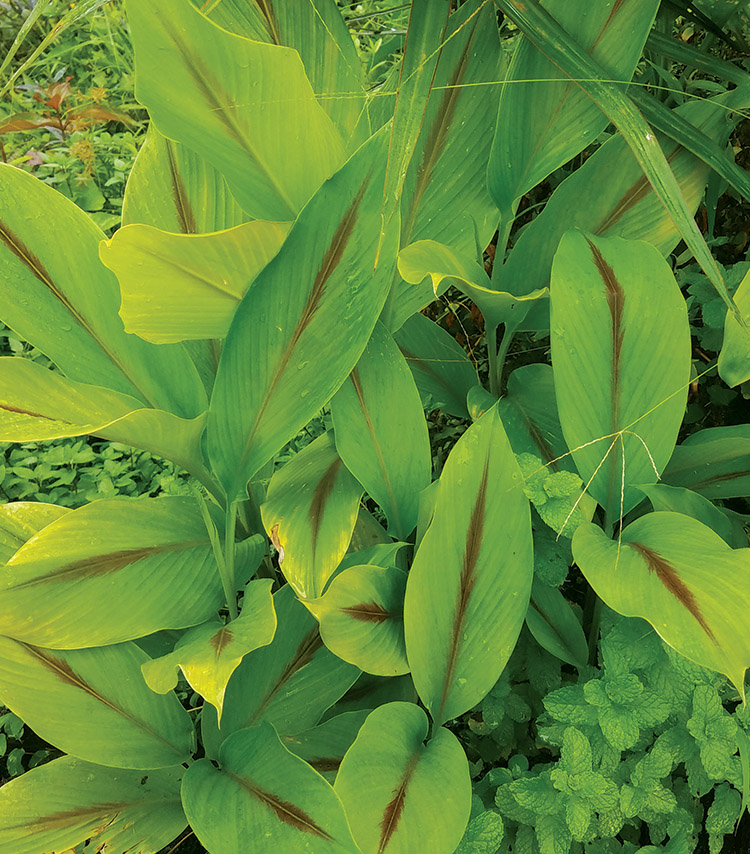
‘Uhaloa (Waltheria indica)
This small, shrubby plant can be found in dry, disturbed or well-drained, moist habitats between 0–1,300 feet in elevation on the main Hawaiian islands.
‘Uhaloa is used to treat sore throat. The bark is removed and chewed several times a day. The bark from the taproot is mixed with several other ingredients, heated, cooled, and drunk daily for five days for asthma. The flowers are considered good medicine for infants at least 10 days old.
Rooted in Tradition, Integrated in the Present
In a recent talk story session, Kumu Dane Kaohelani Silva, a la‘au lapa‘au practitioner and kumu lomi, graciously shared his knowledge of Hawaiian medicinal plants and their healing properties. He also discussed integrated healthcare, and his integrative approach to the management of chronic inflammatory symptoms.
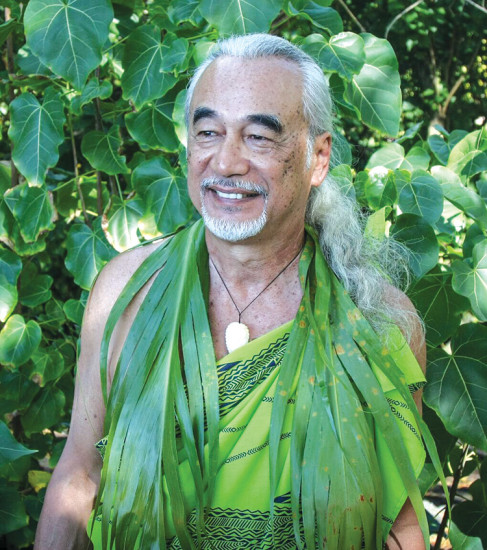
Kumu Dane stated that his role as a healer and medical professional is “to create herbal solutions to chronic inflammatory conditions, based on scientific understanding of traditional wisdom by addressing the inflammatory component.”
He continues, “We are developing new protocols for preventing chronic diseases using traditional plants and utilizing modern technology in order to extract what we’re looking for from each plant. Modern science complements the lessons we’ve learned from traditional healers. For example, when you ask a traditional healer, ‘What is this plant [good] for?’, they will tell you, ‘This [noni] is good for the heart, it will help you control your blood pressure.’”
Today, science confirms what Hawaiian healers have known for generations. As an example, there is a proven connection to taking noni for treating high blood pressure, because it often blocks NF-kB, which is a protein complex that controls DNA, cytokine production and cell survival. Incorrect regulation of NF-kB has been linked to cancer, inflammatory and autoimmune diseases, septic shock, viral infection, and improper immune development.
Kumu Dane utilizes four main plants from lava lapa‘au which specifically block NF-kB: noni, ‘awa, ‘uhaloa, and ‘ōlena, which specifically block the pathway to inflammation. These plants address pehu (acute inflammation) and pehupehu (chronic inflammation.) When pehupehu is not addressed the condition can result in chronic and autoimmune diseases.
Wellness Wisdom, Healthcare Evolution

Healthcare has certainly developed beyond the conventional western concept of treating isolated symptoms with synthetic medications. The science of health continues to evolve with mainstream acceptance of alternative modalities, based on ancestral wellness wisdom.
La‘au lapa‘au and other traditional practices have provided successful results throughout the generations. Recent scientific research supports the why and how of what makes traditional herbal medicine practices work. ❖
For more information: Kumu Dane Kaohelani Silva: haleola.com
Resources:
Guide to Selected Plants of the Mala La‘au Lapa‘au. University of Hawai‘i at Mānoa John A. Burns School of Medicine, Department of Native Hawaiian Health, and the Native Hawaiian Center of Excellence. 2014-2015
Native Hawaiian Medicines. Malcolm N. Chun. First People’s Productions, Honolulu, HI 1994.
Plants in Hawaiian Medicine. Beatrice H. Krauss and Martha Noyes. Bess Press, Honolulu, HI 2001
Plants in Hawaiian Culture. Beatrice H. Krauss. University of Hawai‘i Press, Honolulu, HI 1993
Introduction to NF-kappaB: players, pathways, perspectives. TD Gilmore, Oncogene, 2006
Ke Ola Magazine is not endorsing or making medical claims. The material contained in this article is for informational purposes only and does not constitute medical advice; the content is not intended to be a substitute for professional medical advice, diagnosis, or treatment. Always seek the advice of a physician or other qualified health provider/practitioner with any questions you may have regarding a medical condition.
Mahalo Island Naturals – Local Agriculture Story Sponsor


